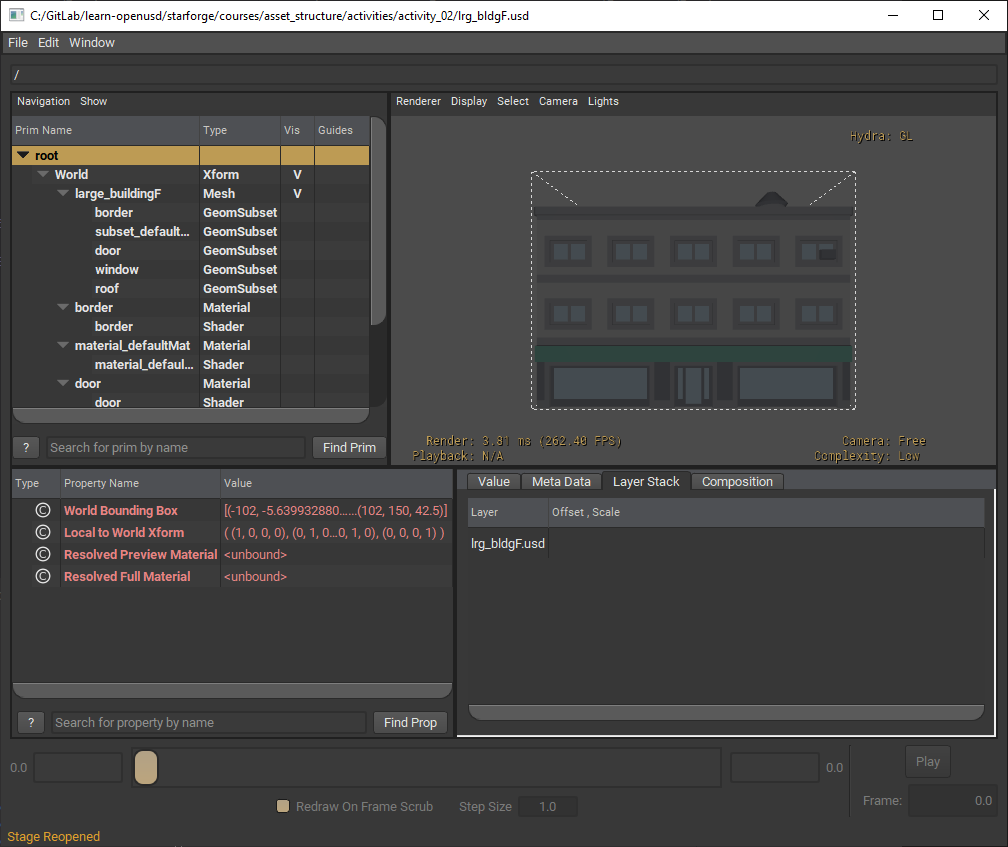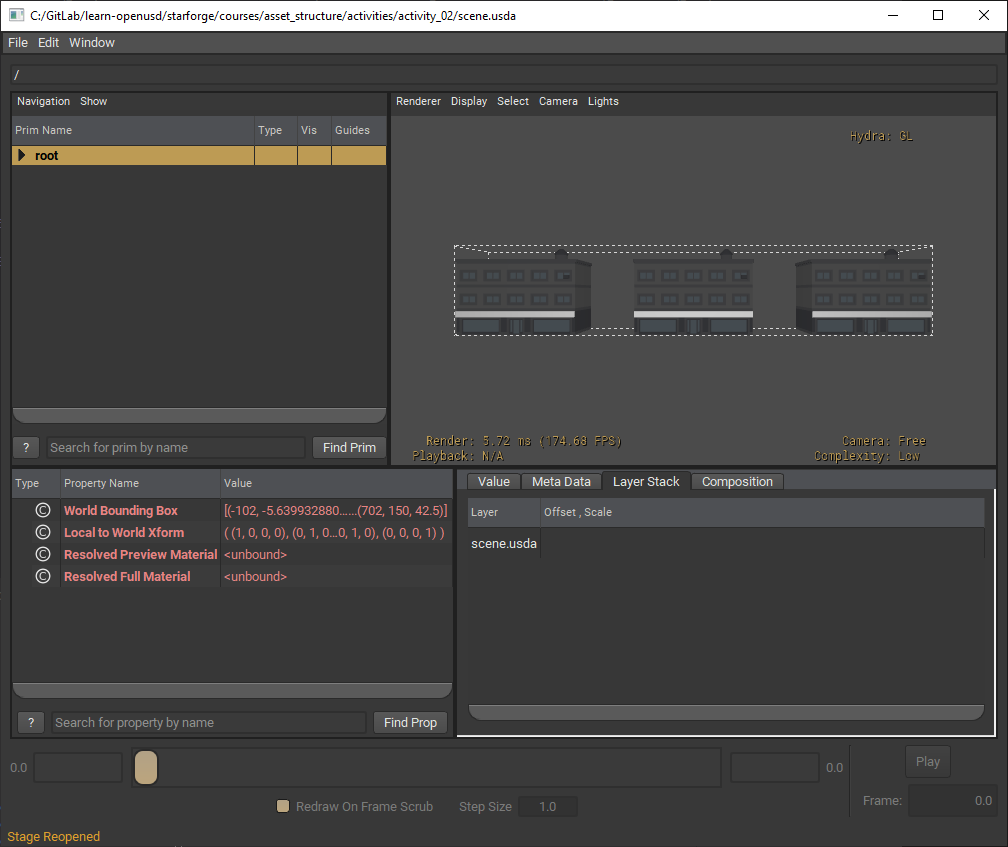Exercise: Encapsulating Your Asset#
Let’s look at an example of what encapsulation looks like.
Open up
lrg_bldgF.usdin usdview by running the following command in your Visual Studio Code terminal:
Windows:
.\scripts\usdview.bat .\asset_structure\exercise_02\lrg_bldgF.usd
Linux:
./scripts/usdview.sh ./asset_structure/exercise_02/lrg_bldgF.usd

Take note that the roof color is a shade of green. Now we will see what happens when we reference this layer into another layer.
Open up
scene.usdain usdview by running the following command in the Visual Studio Code terminal:
Windows:
.\scripts\usdview.bat .\asset_structure\exercise_02\scene.usda
Linux:
./scripts/usdview.sh ./asset_structure/exercise_02/scene.usda

In this scene, we’re referencing the building from the first file, but the roof is now white. Why is this? Also note the warnings in the terminal:
Warning: in _ReportErrors at line 3309 of C:\g\163073426\USD\pxr\usd\usd\stage.cpp -- In </World/lrg_bldgF_01/large_buildingF/roof.material:binding>: The relationship target </roof> from </World/large_buildingF/roof.material:binding> in layer @asset_structure/exercise_02/lrg_bldgF.usd@ refers to a path outside the scope of the reference from </World/lrg_bldgF_01>. Ignoring. (getting targets for relationship </World/lrg_bldgF_01/large_buildingF/roof.material:binding> on stage @asset_structure/exercise_02/scene.usda@ <000001DFF5FC1DD0>)
Warning: in _ReportErrors at line 3309 of C:\g\163073426\USD\pxr\usd\usd\stage.cpp -- In </World/lrg_bldgF_02/large_buildingF/roof.material:binding>: The relationship target </roof> from </World/large_buildingF/roof.material:binding> in layer @asset_structure/exercise_02/lrg_bldgF.usd@ refers to a path outside the scope of the reference from </World/lrg_bldgF_02>. Ignoring. (getting targets for relationship </World/lrg_bldgF_02/large_buildingF/roof.material:binding> on stage @asset_structure/exercise_02/scene.usda@ <000001DFF5FC1DD0>)
Warning: in _ReportErrors at line 3309 of C:\g\163073426\USD\pxr\usd\usd\stage.cpp -- In </World/lrg_bldgF_03/large_buildingF/roof.material:binding>: The relationship target </roof> from </World/large_buildingF/roof.material:binding> in layer @asset_structure/exercise_02/lrg_bldgF.usd@ refers to a path outside the scope of the reference from </World/lrg_bldgF_03>. Ignoring. (getting targets for relationship </World/lrg_bldgF_03/large_buildingF/roof.material:binding> on stage @asset_structure/exercise_02/scene.usda@ <000001DFF5FC1DD0>)
The roof material prim was not fully encapsulated in World. Only prims defined beneath World were brought over.
How can we fix this? Very similar to how we created an entry point in the first exercise, let’s re-parent our roof so it is encapsulated underneath World.
Open
asset_structure/exercise_02/encapsulate.pyin Visual Studio Code. Note that this Python file contains very similar code to what we saw in our last exercise.In the terminal, run the following command:
Windows:
python .\asset_structure\exercise_02\encapsulate.py
Linux:
python ./asset_structure/exercise_02/encapsulate.py
Next, open up
scene.usdain usdview by running the following command:
Windows:
.\scripts\usdview.bat .\asset_structure\exercise_02\scene.usda
Linux:
./scripts/usdview.sh ./asset_structure/exercise_02/scene.usda

Our roof material is now encapsulated within World, so in scene.usda the roof material now gets brought over with the referenced building prim.